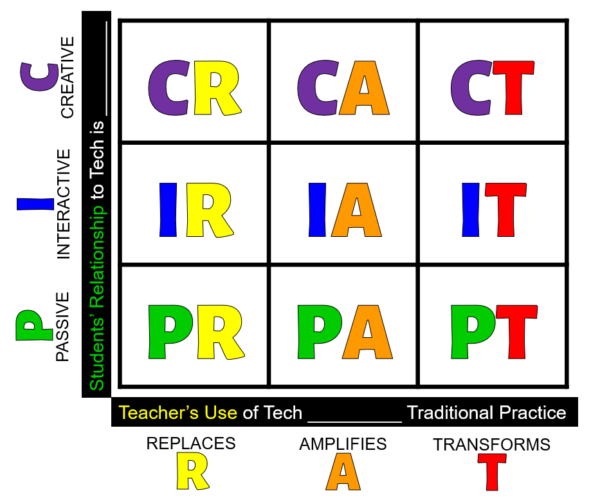Planning, Preparing & Scaffolding
When I started this week’s assignment, I was happy to read/watch about the backward planning design that I was following all along in my teaching career. After all it makes so much sense to star from what the students should know at the end. Having in mind the end result makes it easier to design your activities and assessments.
I really enjoyed reading and found extremely useful Larmer’s article “27 tips for Managing the “Messy Middle” of a project and, especially, loved the collaboration rubric and the contract form that was linked from the article, as they were extremely useful! All his tips made so much sense and were really helpful for someone that doesn’t have the experience of a project of that magnitude, such as practice with your students collaboration skills, teach specific skills before and during the project, meet with teams and make them self-assess and reflect at specific checkpoints, etc.
Also, this week I studied about technology integration frameworks, and really liked the PIC-RAT (Passive, Interactive, Creative; Replaces, Amplifies, Transforms) model, because I could easily see how it applies to my project. I have always been a fan of using technology in the classroom and, especially, I appreciate when technology transforms learning making it something engaging and memorable for the students.
Aside from reading, I did a lot of thinking, planning and constructing this week. Creating a timeline for my project was not an easy task as I had to think of how the activities should unfold and consider the best possible scenarios and combinations. The student learning guide was also something that took a lot of time in order to align assessments and activities with learning outcomes. But maybe the most important thing I had to consider this week was how to scaffold learning so that it can benefit all students. So, at the beginning of the project I tried to investigate what students already knew about ancient Greece and connect it with the area that we wanted to research. Also, throughout the project I created opportunities for teacher-led class discussions, pair discussions, self and peer assessments. Thus, during the project, at the end of each week, the teacher holds student-teacher conferences for research and progress check and gathers the whole class for class discussion and reflection. In addition, I included mini lessons (see Student Learning Guide) for areas where some of my students might needed additional support, such as research methodologies, argumentative writing strategies, public speaking, creating Flipgrid videos and presentations, etc. Also, I provided a research log template, a team contract and a presentation check list to help them collaborate and organize their research, so I think that I have included sufficient scaffolding strategies to address students’ needs.
References
Larmer, J. (2021). 27 Tips for Managing the “Messy Middle” of a Project. PBLworks.
PIC RAT considers not only the teacher’s use of technology but also the student’s relationship to the technology, indicating that the student should be more creative and active and the technology used should transform the lesson delivered.
PIC RAT Matrix – Image credit South Forsyth High
BPLWorks – Project Based Teaching Practices: Manage Activities



![10th week’s reflection [8/3 – 8/5]](https://www.gkonstantinou.com/wp-content/uploads/2022/07/pbl-500x383.png)
![9th Week’s Reflection [7/27 – 8/2]](https://www.gkonstantinou.com/wp-content/uploads/2022/07/1_Q9bfz0wD837_Irn20O-ERA-500x383.jpeg)
![8th Week’s Reflection [7/20 – 7/26]](https://www.gkonstantinou.com/wp-content/uploads/2022/07/Role-of-Teachers-in-PBL-500x383.jpg)
![4th-5th Week’s Reflection [6/22 – 7/5]](https://www.gkonstantinou.com/wp-content/uploads/2022/06/bulletin-500x383.jpg)
![3rd Week’s Reflection [6/12 – 6/21]](https://www.gkonstantinou.com/wp-content/uploads/2022/06/site-500x383.jpg)